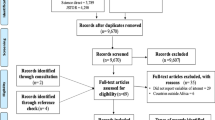Abstract
This paper takes a population health planning and policy view of the issues in place and health raised by the research articles in this collection. The planning and policy issues are reducing health inequities and strengthening neighbourhoods. Regardless of the state of the art of place and health research, targeted social investments are being made to support neighbourhood infrastructure and community mobilization for place-based poverty reduction and community well-being in places across Canada. “Vibrant Communities”, “Action for Neighbourhood Change” and other priority community initiatives provide an opportunity for intensive neighbourhood-based action research and future dialogue that will further advance theory and action on place and health.
Résumé
Les enjeux liés au « lieu et à la santé » mentionnés dans les articles de recherche de ce numéro sont ici abordés selon une perspective de planification et de prise de décisions stratégiques en santé des populations. Deux aspects de la planification et des politiques gagneraient à s’appuyer sur la recherche sur le lieu et la santé: la réduction des inégalités en matière de santé et l’amélioration des quartiers. Mais peu importe l’état actuel de la recherche, on fait déjà, un peu partout au Canada, des investissements sociaux ciblés pour soutenir les infrastructures de proximité et la mobilisation communautaire dans certains lieux afin de réduire la pauvreté et de favoriser le bien-être communautaire. Des initiatives communautaires prioritaires comme « Collectivités dynamiques » ou « Quartiers en essor » pourraient être l’occasion de faire de la recherche-action intensive au niveau du quartier et d’amorcer un nouveau dialogue qui fera avancer la théorie et la pratique dans le domaine du lieu et de la santé.
Similar content being viewed by others
References
Federal/Provincial/Territorial Advisory Committee on Population Health and Health Security. Reducing Health Disparities — Roles of the Health Sector: Discussion Paper. December 2005.
Public Health Agency of Canada. Population Health Approach. Available at: https://doi.org/www.phacaspc.gc.ca/ph-sp/phdd/approach/index.html. Accessed August 30, 2006.
Health Council of Canada. Health Care Renewal in Canada: Accelerating Change. January 2005.
Canadian Institute for Health Information. The Health Indicators Project: the Next 5 Years. Report from the Second Consensus Conference on Population Health Indicators. 2005
Statistics Canada. Baseline indicators of mortality for monitoring health disparities. ...au courant. Newsletter of the Health Analysis and Measurement Group (HAMG). 82-005-XIE. March 2005. Available at: https://doi.org/www.statcan.ca/emglish/freepub/82005-XIE/2004003/coming.htm. Accessed August 30, 2006.
Marmot, G, Kogevinas, M, Elston, MA. Social/economic status and disease. Annu Rev Public Health 1987;8:111–35.
Krieger, N. The making of public health data: paradigms, politics and policy. J Public Health Policy 1992;13(4):412–27.
Anderson LM, Scrimshaw S, Fullilove M, Fielding JE, Task Force on Community Preventive Services. The Community Guide’s model for linking the social environment to health. Am J Prev Med 2003;24(3S):12–20
Beauvais C, Jenson J. The Well-Being of Children: Are there “Neighbourhood Effects”? Discussion Paper F/31 Family Network. Canadian Policy Research Networks, March 2003
PolicyLink Health Disparities Team. Reducing Health Disparities Through a Focus on Communities. PolicyLink, 2002.
Wilkins R, Berthelot JM, Ng E. Trends in mortality by neighbourhood income in urban Canada from 1971 to 1996. Health Rep 2002;13(suppl):1–27. Statistics Canada Catalogue 82-003.
Rajaratnam, J, Burke J, O’Campo P. Maternal and child health and neighbourhood context: the construction of area-level variables. Health & Place 2006;12(4):547–56.
Infrastructure Canada. Research Note. A Brief Review of Research on Neighbourhoods in Canada. 2005. Available at: https://doi.org/www.infrastructure.gc.ca/research-recherche/rresul/index_e.shtml Accessed August 30, 2006.
Canada. External Advisory Committee on Cities and Communities. From Restless Communities to Resilient Places: Building a Stronger Future for All Canadians. Final Report. June 2006.
Bradford, N. Place matters and multi-level governance: perspectives on a new urban policy paradigm. Policy Options 2004;25(2):39–44.
Strong Neighbourhoods Task Force, United Way of Greater Toronto, City of Toronto. Strong neighbourhoods. A commitment to action. June 2005
Alasia A. Mapping the socio-economic diversity of rural Canada. Rural and Small Town Canada Analysis Bulletin. March 2004;5(2). Catalogue no. 21-006-XIE. Statistics Canada.
Canadian Institute for Health Information. Improving the Health of Canadians. 2004: Chapter 4.
Wilson K. Therapeutic landscapes and First Nations Peoples: an exploration of culture, health and place. Health & Place 2003:9(2): 83–93.
Gorman C. Orienteering Over New Ground: a Neighbourhood Theory of Change. Caledon Institute of Social Policy, June 2006.
Torjman S. The Group of Six. Caledon Institute of Social Policy. April 2005.
Tamarack. Government Engagement. 2007. Available at: https://doi.org/tamarackcommunity.ca/g2s329.html.
Vibrant Surrey, Bridging the Gaps and Consolidating Strengths. January 2007, Caledon Institute. Vibrant Communities Stories. Available at: https://doi.org/www.caledoninst.org.
Vibrant Communities Calgary. Year End Report. December 1, 2006; and VCC In Motion newsletter 3(1). Winter 2007. Available at: https://doi.org/www.vibrantcalcagry.com.
Cabaj M. The Poverty Matrix: Understanding Poverty in Your Community. A Tool for Vibrant Communities, 2nd ed, winter 2004.
Hamilton Roundtable for Poverty Reduction. Making Hamilton the Best Place To Raise a Child. February 2007. Available at: https://doi.org/www.hamiltonpoverty.ca.
Whittingham L. Expand building program, Ottawa urged. Toronto Star March 1, 2007.
United Way Takes Action in Under-served Neighborhoods Across Toronto. Press release, October 2. Available at: https://doi.org/www.uwgt.org/media_tools/pdfs/UnitedWay-Neighbourhoods-Oct%202.pdf.
Notes for Remarks by the Honorable George Smitherman, Minister of Health and Long-term Care. Community Health Centres/Malvern. November 10, 2005. Available at: https://doi.org/www.aohc.org/aohc/index_e.aspx?ArticleID=118.
Simpson S. Strengthening relationships with local government. Action for Neighbourhood Change, January 2007. Available at: https://doi.org/www.anccommunity.ca.
Author information
Authors and Affiliations
Corresponding author
Rights and permissions
About this article
Cite this article
Patychuk, D.L. Bridging Place-based Research and Action for Health. Can J Public Health 98 (Suppl 1), S70–S73 (2007). https://doi.org/10.1007/BF03403729
Published:
Issue Date:
DOI: https://doi.org/10.1007/BF03403729




